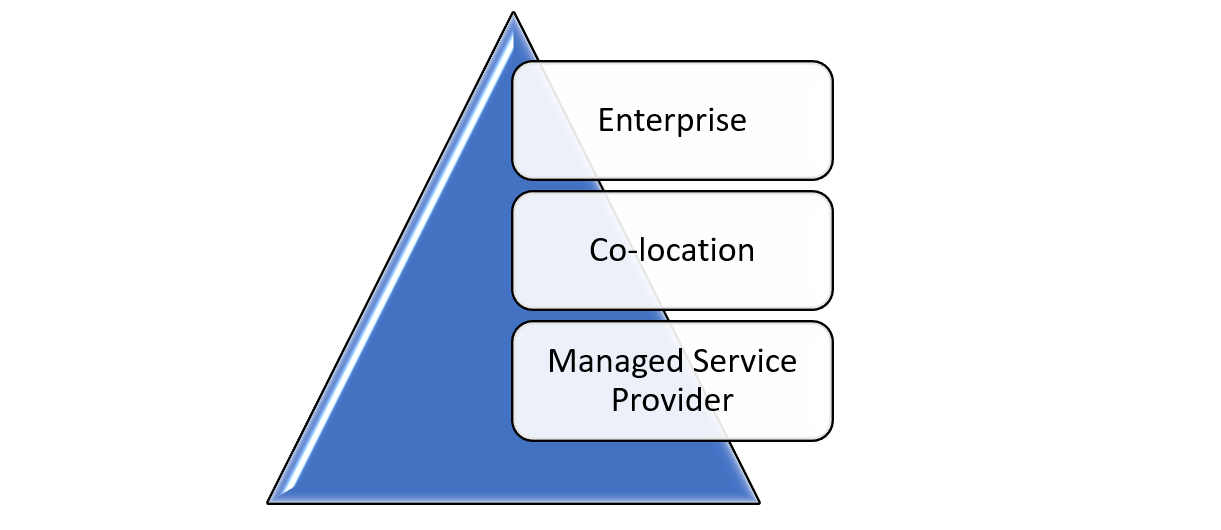— Published on 25 Mar 2024

In the first of many articles, our team has joined forces to demystify the IT industry, which can initially appear intimidating and complex. Terms like racks, power distribution units, switches, servers, firewalls—all represent different domain experts within an IT architecture.
At Panduit, we consider ourselves data center infrastructure providers. To start, let's delve into the fundamental question: What exactly is a data center?
So, essentially, a data center comprises three characteristics:
Let's keep it simple. A data center is a physical space where IT infrastructure resides to deliver applications and services. Now, when it comes to data centers, we mainly classify them into three types.

Figure 1. Types of Data Centers (Simplified)
While there are other terms like hybrid or cloud data centers, let's focus on these three main types for now.
Simply put, if Corporation A has its own office space and IT equipment to provide services either internally or externally, it's classified as an enterprise data center.
Now, if Corporation A lacks space, they may seek a company that offers space and power for their equipment. Co-location data center providers fulfill this need by providing the necessary infrastructure.
In this scenario, Corporation A might opt to have the data center manage their equipment as well. This type of data center not only offers space and power but also additional services to ensure proper maintenance of all equipment.
The key difference between types 2 and 3 lies in the scope of services provided. In type 2, co-location providers offer space only, requiring tenants like Corporation A to construct their infrastructure. Conversely, in type 3, providers offer both space and setup services to clients.
The size of a data center can vary greatly, ranging from a small room to an entire building. However, it must be a dedicated space for IT infrastructure. Its primary function should be to provide services.
Large Paragraph Text Used As A Subheading
Pellentesque non magna eget ex lobortis finibus. Lorem ipsum dolor sit amet, consectetur adipiscing elit. Etiam nec arcu non eros hendrerit viverra a vitae libero. Etiam et ultricies nulla. Donec euismod lectus magna, eu dignissim mauris hendrerit vulputate.
| Time | Place | Details |
|---|---|---|
| 10:00 am - 10:55 am | Expo Hall | Meet and greet in the lobby outside the Expo Hall before the General Assembly. |
| 11:00 am - 11:55 am | Rm 314 | Expert Track: TOP 10 WAYS TO MAKE A DIFFERENCE IN THE INDUSTRY | John Dough, CFO Marketizingly |
| 11:00 am - 11:55 am | Rm 159 | Social Track: MODERN NETWORKING | Hosted by: SponsorName |
Pellentesque non magna eget ex lobortis finibus. Lorem ipsum dolor sit amet, consectetur adipiscing elit. Etiam nec arcu non eros hendrerit viverra a vitae libero. Etiam et ultricies nulla. Donec euismod lectus magna, eu dignissim mauris hendrerit vulputate.